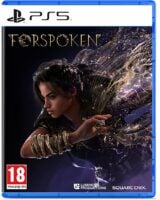2024 Preview: Foamstars could be Square’s surprise hit, if it can soak up copycat claims
Square Enix’s team shooter has more than a hint of squid flavour

During the PlayStation Showcase back in May, Square Enix revealed a surprise new game that looked rather familiar.
With its 4v4 online multiplayer gameplay, its use of bright colours to denote progress and its non-violent nature, the trailer for Foamstars gave a lot of viewers serious Nintendo vibes, with a certain squid-based shooter foremost in their minds.
Square Enix’s description at the time didn’t do much to throw off these suspicions. “In this game, foam is the ultimate resource,” it said. “It can be used in multiple ways: To create slippery surfaces that players can use to surf around the arena at high speed; to build terrain, helping players defend from enemy attacks or creating high vantage points to take out opponents; and finally, to foam up the opposition and win the match.”
Swap out the word ‘foam’ for ‘ink’, and most of that description applies to Nintendo’s Splatoon series too, so it’s fair to say that the initial reaction to Foamstars’ first trailer was a mixture of amusement and bewilderment that Square Enix would announce something that appeared to be so brazenly derivative.
The following month, however, at an in-person Summer Games Fest event held for the press, the first hands-on sessions with Foamstars took place, and the mood began to change. Most who played it came away impressed, to the extent that it was becoming something of a hot topic among those in attendance.
“After we were able to get our hands on it for a few matches at Summer Game Fest Play Days, one thing is certain: Square Enix‘s multiplayer game doesn’t deserve to be dismissed,” our hands-on preview at the time read. “As a fun take on the 4v4 shooter genre with a unique foam mechanic at its centre, it’s not hyperbole to say Foamstars was one of the biggest surprises of this week’s show.”
While the hands-on sessions did nothing to suggest the game wasn’t influenced heavily by Nintendo’s popular team shooter, it did at least make it clear that there are enough differences in the gameplay to distinguish it as its own game.
What really sets Foamstars apart from its cephalopodic counterpart, is the foam itself. The paint in Splatoon sticks to a surface and lets the player swim in it, and Foamstars’ foam shares those qualities to a point, but it’s also capable of more.
As what’s essentially a 3D object being generated into the playing space, it can be shaped into a wall to protect from attacks, or shaped into a hill for better vantage points, which is an impressive trick that should help the game differentiate itself from Splatoon.
“While the hands-on sessions did nothing to suggest the game wasn’t influenced heavily by Splatoon, it did at least make it clear that there are enough differences in the gameplay to distinguish it”
The roster in the version we played included four different character classes, each offering something different during battles: one has rapid-fire weapons for mid-range combat, one uses shotguns for close-quarters conflicts, one can spread foam from distances, and one focuses mainly on spreading foam rather than attacking.
The process for eliminating other players is different too, and has the potential to be less frustrating than Splatoon. Rather than simply splatting someone and respawning them back at their team’s base, players now defeat opponents by covering them in foam until they’re trapped in a bubble, at which point they can either be eliminated by an opponent or, crucially, saved by a teammate, depending on who slides into their bubble first.
Eliminations are also the focus of the unique Star Player feature, which has the potential to be a literal game-changer. Once a team earns seven kills, the person on the other team who’s been performing best is declared their Star Player and essentially becomes the target – once you kill the Star Player, you win the round.

This can quickly change the tone of the round – as soon as the Star Player has been assigned, any team that’s been engaging in free-for-all gunplay will suddenly start tactically guarding them, trying to pick off enemy attackers in the hope of activating their Star Player too and turning the round into a tense sudden death shootout.
“Players on each side shouted out loudly as the two Stars deftly avoided foam while being protected by their teammates, with our team ultimately winning the match to cheers of relief,” our hands-on read. “That’s the kind of first impression a game should make.”
It appears that a similar first impression was made at the end of September when a brief three-day open beta took place. While some players complained about matchmaking issues and struggling to find an active game, others spoke of how much fun they were having and how they were now very keen to play the finished game. And, of course, there were plenty of Splatoon references.
Ultimately, the latter is something Foamstars is likely never going to shake. The game could be released to a cavalcade of whoops and hollers, with players pledging their long-term allegiance to it, and there’ll still be a corner of the community calling it a Splatoon wannabe. Frankly, there’s nothing wrong with that. Splatoon is in no danger of ever coming to the PS5 or PC, so in its absence why shouldn’t Square Enix try to fill that gap (albeit with foam instead of ink)?
As long as those initial early bursts of enjoyment experienced during Summer Game Fest and the subsequent open beta can continue long after the game is out, and as long as it’s regularly updated with new content to make sure it doesn’t become stale, Foamstars may see its reputation grow rapidly after launch.
Read more 2024 game previews:














